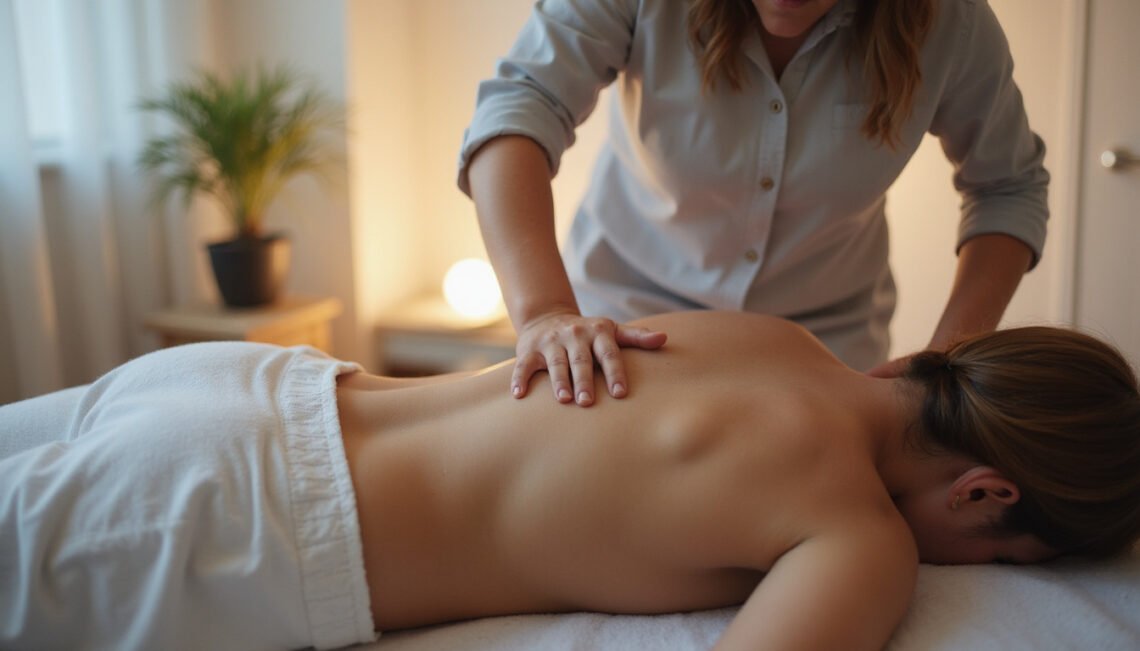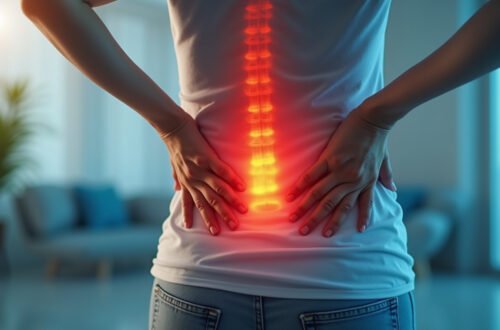Lower back pain affects millions of people worldwide and can significantly impact daily activities and overall quality of life. One of the most effective and natural ways to alleviate this discomfort is through lumbar massage. Lumbar massage targets the muscles and tissues around the lower spine, offering substantial relief and a host of other health benefits. In this article, we will explore the lumbar massage benefits and explain how it effectively relieves lower back pain.
What Is Lumbar Massage?
Lumbar massage focuses on the lower portion of the back, specifically the lumbar region of the spine. This area is a common source of pain due to poor posture, muscle strain, injury, or underlying medical conditions such as herniated discs or sciatica. A lumbar massage involves therapeutic techniques like kneading, stroking, and applying pressure to the muscles in this region to reduce tension, increase blood flow, and promote relaxation.
By targeting these muscles and tissues, lumbar massage not only alleviates pain but also improves mobility, reduces stiffness, and enhances overall wellbeing.
How Lumbar Massage Relieves Lower Back Pain
Understanding how lumbar massage benefits those with lower back pain requires a look at the physiological effects occurring during a session:
1. Reduces Muscle Tension and Spasms
Tight muscles can compress nerves and aggravate pain in the lower back. Lumbar massage helps relax these muscle fibers, reducing spasms and stiffness. This loosening effect can prevent further damage and improve flexibility.
2. Improves Circulation
Enhanced blood flow delivers oxygen and nutrients to damaged tissues, accelerating healing. The gentle pressure applied during a lumbar massage stimulates vascular circulation, which helps clear out metabolic waste products that contribute to inflammation and pain.
3. Stimulates the Nervous System
Massage triggers the release of endorphins—our body’s natural painkillers. These neurochemicals help block pain signals and promote a sense of wellbeing, making lumbar massage a natural antidepressant and analgesic.

4. Reduces Inflammation
Chronic inflammation contributes to persistent pain in the lumbar region. Through mechanisms such as increased blood flow and the release of anti-inflammatory substances, lumbar massage can play a role in reducing tissue inflammation.
Key Benefits of Lumbar Massage
Aside from relieving lower back pain, lumbar massage offers a range of additional benefits that contribute to overall health:
- Enhanced Mobility: Reduces stiffness and increases the range of motion in the lower back and hips.
- Stress Reduction: Lowers levels of cortisol and calms the nervous system, reducing stress-related muscle tension.
- Improved Posture: Corrects muscle imbalances that lead to poor posture, which is essential in preventing recurring back pain.
- Better Sleep: Relieves pain and relaxes the body, contributing to deeper and more restorative sleep cycles.
- Boosted Immune Function: Some studies suggest that massage therapy can enhance immune response by reducing stress hormones.
When to Consider Lumbar Massage
If you experience any of the following, lumbar massage might be an ideal therapeutic option:
- Persistent or intermittent lower back pain
- Muscle tightness or spasms in the lumbar area
- Reduced flexibility or difficulty bending and twisting
- Muscle soreness after physical activity
- Chronic stress that manifests as tension in the lower back
However, it is always advisable to consult with a healthcare provider before starting any massage therapy, especially for conditions like fractures, infections, or severe neurological symptoms.
Types of Lumbar Massage Techniques
Massage therapists use various techniques particularly suited for the lumbar region:
- Swedish Massage: Uses long strokes and gentle kneading to relax muscles and improve circulation.
- Deep Tissue Massage: Targets deeper muscle layers and connective tissue to relieve chronic tension and adhesions.
- Trigger Point Therapy: Focuses on specific painful points to release muscle knots and referred pain.
- Myofascial Release: Works on the fascia (connective tissue) to improve movement and reduce pain.
- Shiatsu: Uses finger pressure on specific points in the lumbar area to rebalance energy flow and relieve discomfort.
Choosing the right technique depends on the severity of the pain and individual preferences.
How to Maximize Lumbar Massage Benefits at Home
While professional lumbar massage sessions are highly effective, you can also incorporate self-care routines to complement the therapy:
- Use a foam roller or massage ball to gently roll out muscle knots in the lower back.
- Practice gentle stretching exercises like child’s pose and spinal twists to keep muscles flexible.
- Maintain good posture during daily activities to reduce strain on the lumbar region.
- Apply heat therapy such as warm compresses after massage to enhance muscle relaxation.
- Stay hydrated to support tissue repair and flushing out toxins.
Scientific Evidence Supporting Lumbar Massage
Studies have consistently demonstrated the effectiveness of lumbar massage in reducing lower back pain. According to research published in the Journal of Pain Research, massage therapy significantly reduces pain intensity and improves functional status in patients with chronic lower back pain (source).
These findings underline lumbar massage as a valuable, non-invasive treatment option that complements traditional medical approaches.
FAQ: Lumbar Massage for Lower Back Pain
Q1: Is lumbar massage safe for everyone with lower back pain?
A: Lumbar massage is generally safe for most people, but it is important to consult a healthcare professional before receiving massage if you have serious medical conditions, such as fractures, infections, or certain spinal abnormalities.
Q2: How often should I get lumbar massage to see results?
A: Frequency varies by individual, but many people benefit from weekly or biweekly sessions initially. Consistency helps maximize pain relief and mobility improvements over time.
Q3: Can lumbar massage replace other treatments like medication or physical therapy?
A: Lumbar massage is best used as a complementary therapy alongside medications, physical therapy, or other medical treatments, rather than as a complete replacement.
Final Thoughts: Embrace Lumbar Massage for Lasting Pain Relief
Lower back pain can be debilitating, but lumbar massage presents a natural, effective way to manage and relieve this common condition. From reducing muscle tension to improving blood flow and stimulating pain-relieving chemicals, the benefits of lumbar massage are backed by science and real-world experience.
If you’re looking to alleviate your lower back pain and enhance overall wellbeing, consider incorporating lumbar massage into your healthcare routine. Whether through professional therapy sessions or guided self-massage techniques, you have the power to heal and restore your lumbar health.
Take action today—schedule a consultation with a licensed massage therapist and experience the transformative benefits of lumbar massage for yourself!






